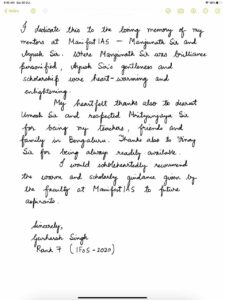The Act seeks to amend the Arms Act, 1959. It seeks to decrease the number of licensed firearms allowed per person and increase penalties for certain offences under the Act. It also introduces new categories of offences.
Changes brought by the Act
- The Act reduces the number of permitted firearms from 3 to 1. It also provides a time period of 1 year to deposit the excess firearms with the officer-in-charge of the nearest police station or with a licensed firearm dealer as specified. If the owner is a member of the armed forces, the firearm may be deposited with a unit armoury. The excess firearms will be delicensed within 90 days from the expiry of the 1 year period.
- The Act increases the duration of the validity of a firearm license from 3 years to five years.
- The Act prohibits procuring unlicensed firearms, and the conversion of one category of firearms to another without a license.
- It allows members of rifle clubs or associations to use any firearm for target practice instead of only point 22 bore rifles or air rifles.
- The Act increases the punishment to between 7 years and life imprisonment, along with a fine for the offenses of
- dealing in unlicensed firearms
- shortening or conversion of a firearm without a licence
- import or export of banned firearms
- The Act increases the punishment to imprisonment between 7 and 14 years, along with a fine for the offense of acquisition, possession or carrying of prohibited ammunition without a license.
- The Act includes new offenses:
- Forcefully taking a firearm from police or armed forces, punishable with imprisonment between 10 years and life imprisonment, along with fine.
- Using firearms in a celebratory gunfire which endangers human life or personal safety of others, punishable with imprisonment of up to 2 years, or fine of up to 1 lakh rupees, or both.
- The Act also defines offences committed by organized crime syndicates and illicit trafficking. It defines illicit trafficking to include the trade, acquisition, sale of firearms or ammunition into or out of India where the firearms are either not marked as per the Act or violate the provisions of the Act.
- The central government may make rules to track firearms and ammunition from manufacturer to purchaser to detect, investigate, and analyse illicit manufacturing and trafficking.















